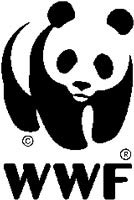How to make your marque
When is it illegal to use the same name as another company? Brandon Cheevers looks at the pitfalls designers encounter when creating a new name

The legal situation surrounding the rebranding of BT Wireless, now mmO2, and its mobile operation Cellnet, renamed O2, has thrown the problems of name generation into the spotlight.
A north London entertainment venue, the O2 Centre, is currently taking legal advice over the use of the registered trademark (DW 6 September).
And now, before O2 can come up for air, one intellectual property lawyer is predicting further legal wranglings over consumer confusion between the O2 Centre and the O2 branding of its retail estate, handled by Rodney Fitch & Co.
A spokesman for property group Burford, which owns 25 per cent of the O2 Centre and the copyright to the name, says, ‘Lawyers are looking at the area and an announcement will be forthcoming.’
The use of the same brand name by different companies is inevitable. For example, there are 18 European Union community registry entries for O2 as a marque, either registered or in application.
The issue is whether the goods or services of one company overlap with those of another. For the O2 Centre to have a genuine case it would need to show that BT’s use of the O2 brand will ’cause confusion in the marketplace’.
‘The entertainment centre needs to persuade a court that BT’s use of the same marque could damage its reputation or is taking unfair advantage of a reputation it has built around the marque.
‘Problems could occur when BT has an [O2 branded] retail outlet, as this could cause confusion among consumers,’ says IP lawyer Simon Clark of Theodore Goddard.
Name generation is a complex process which includes an extensive search to establish if companies with the same marque in the same market sector exist. Lambie-Nairn was charged with name generation and branding for both Wireless and Cellnet.
‘We have to understand the ambitions of the brand, the market and the target audience. When we know what we want to achieve with the brand we look at what names are used in the sector and what’s available,’ explains Lambie-Nairn head of strategy James Quayle.
‘We create a shortlist of names that we feel captures the brand essence and then do a legal search to ensure that no major competitors with the same name exist in the sector.’
However, Quayle concedes that it can be difficult coming up with a unique marque. ‘There are very few names or words that haven’t been used by someone else. And the equity of an existing brand means it is not worth using the same name,’ he says.
The recent court case involving the conservation organisation WWF and the World Wrestling Federation highlights the problems caused by name duplication, even when two companies operate in different sectors.
WWF brought the action against the federation for the same reasons it entered into a 1994 agreement, signed by both parties, limiting the federation’s use of the initials WWF to protect its identity.
‘[The WWF’s] identity, through the WWF initials, is crucial to its ability to achieve its mission’, says a WWF statement. A court upheld the agreement in August.
‘We raise money on the back of the WWF name and the Panda logo, so we want to ensure there is clarity about what people are giving their money to. It’s important that we can protect our initials. The logo and WWF is who we are and how we recruit,’ says WWF head of press and campaigns Anita Neville.
‘There were problems with misleading newspaper headlines, so we wanted to remove ambiguities. The judge referred to people being uncertain. Additionally, the Internet is one of our major recruitment tools. The federation registered 85 Internet domain names worldwide, meaning we were way down the list when people were using search engines to look for us on the Internet,’ adds Neville.
It is not uncommon for a company to buy out the registered trademark of another, though this can be expensive. ‘Normally, the situation involves a small company that wants to ride on the back of a larger company’s name and reputation. Or replication is simply a mistake,’ says Clark.
But for most companies, building brand equity has as much to do with the creation of a unique identity as the goods and services they provide.
‘You have to view the naming process as the starting point for the brand. You have to ask yourself, do you want to get close to someone else’s name, or replicate it? Trademark searches ensure that a company can use the name in its sector, but [they] also demonstrate that the name is inherently protectable and that the company can own it. This is an important part of starting to build brand values,’ says Interbrand director Suzanna Trollope.
Through name generation, consultancies have a great opportunity to change the face of corporate Britain and beyond. But as the options for creating unique identities decrease, the imagination of most consultancies will become increasingly stretched.
-
Post a comment



